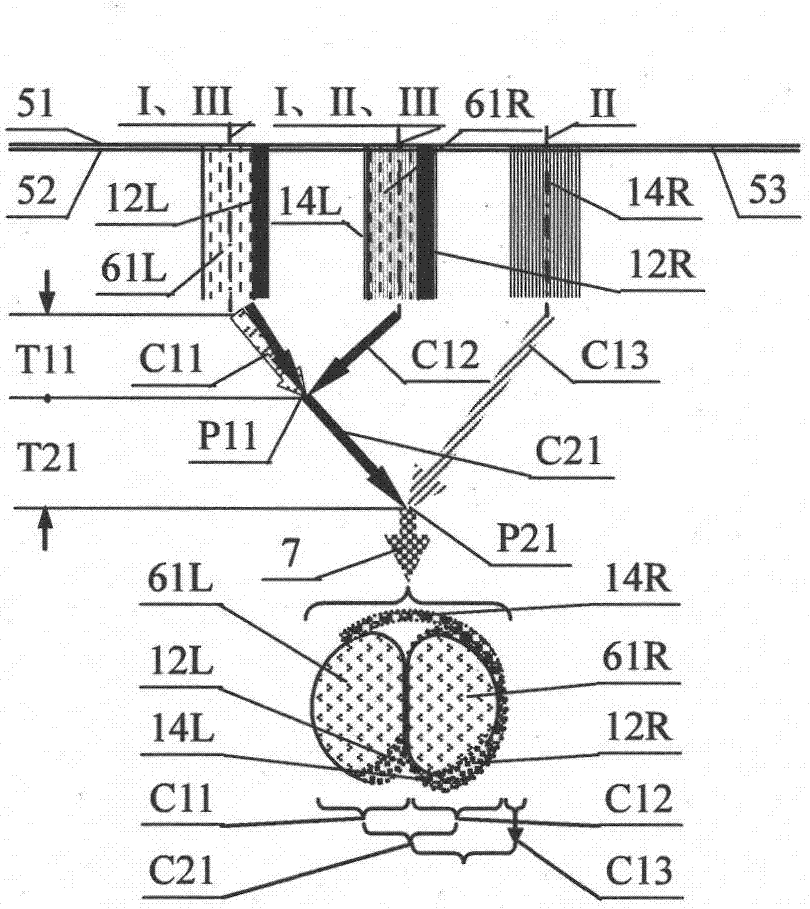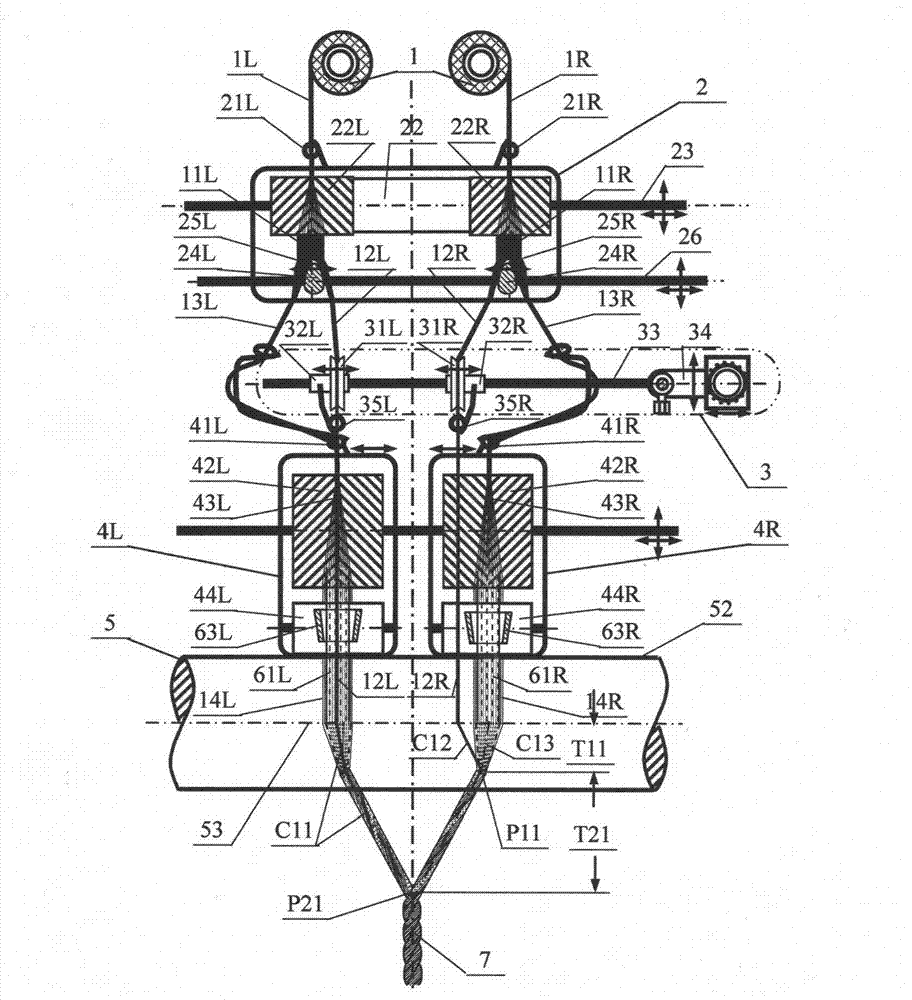Non-equal convergent point double tow-screen composite yarn, spinning method and application
A composite spinning and convergence point technology, applied in the direction of yarn, textile and paper making, etc., can solve the problems of spinning, unsuitable for short and weak fibers, high branching, inability to spin and poor spinnability, etc.
- Summary
- Abstract
- Description
- Claims
- Application Information
AI Technical Summary
Problems solved by technology
Method used
Image
Examples
Embodiment 1
[0094] Embodiment 1: recycled cotton (noil) and viscose filament three-convergence axis composite spinning
[0095] Adopt the non-equal convergence point double-bundle net composite spinning method of the present invention, two strands of viscose filament bundles are spread according to the above-mentioned non-equal convergence point double-bundle net split-spreading method, and then the front roller nip and recycled cotton fiber slivers to carry out convergent composite spinning with three converging axis coaxial 3+(2+1) structures to form a smooth composite yarn. The specific process parameters are shown in the table below. Yarn structure such as Figure 4a As shown, the wrapping protection and reinforcement of filaments to short fibers are better. The yarn hairiness index, twist angle, breaking strength, breaking elongation and yarn fineness irregularity of the spun bright and clean composite yarn are listed in the table below. Among them, the spinning rate is very high, ...
Embodiment 2
[0096] Embodiment 2: Short hair and silk three-convergence axis composite spinning
[0097] Adopt the non-equal convergence point double-bundle net composite spinning method of the present invention, spread the two strands of silk filaments according to the above-mentioned non-equal convergence point double-bundle net splitting and spreading method, and then spread them at the nip of the front roller Carry out three-convergence axis-symmetric convergence composite spinning close to the 3+(1+2) structure with short-haired fiber strands to form a smooth composite yarn. The specific process parameters are shown in the table below. Figure 4c It can be seen that the wrapping protection of filaments to short fibers and the protection and reinforcement of lateral dams are better. The yarn hairiness index, twist angle, breaking strength, breaking elongation and yarn fineness irregularity of the spun bright and clean composite yarn are listed in the table below. Among them, the spinn...
Embodiment 3
[0098] Embodiment 3: kapok / PTT filament four-convergence axis composite spinning
[0099] Adopt the non-equal convergence point double-bundle net composite spinning method of the present invention, spread the two strands of PTT filament bundles according to the above-mentioned non-equal convergence point double-bundle net splitting and spreading method, and then spread them at the front roller nip Carry out convergent composite spinning with kapok fiber strands in four-converging shaft upper cover mesh wrapping and down-going coaxial 2 2+1+1 structure to form a smooth composite yarn. The specific process parameters are shown in the table below. Yarn structure such as Figure 6f As shown, there are tow reinforcements in the short fiber strands and between them, and the contact surface between the strands is the kapok fiber itself, so the fiber cohesion is excellent, and the double wire mesh has a symmetrical wrapping protection effect on the kapok strands, preventing Loss and ...
PUM
 Login to View More
Login to View More Abstract
Description
Claims
Application Information
 Login to View More
Login to View More - R&D
- Intellectual Property
- Life Sciences
- Materials
- Tech Scout
- Unparalleled Data Quality
- Higher Quality Content
- 60% Fewer Hallucinations
Browse by: Latest US Patents, China's latest patents, Technical Efficacy Thesaurus, Application Domain, Technology Topic, Popular Technical Reports.
© 2025 PatSnap. All rights reserved.Legal|Privacy policy|Modern Slavery Act Transparency Statement|Sitemap|About US| Contact US: help@patsnap.com



